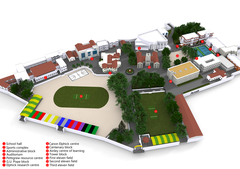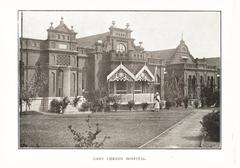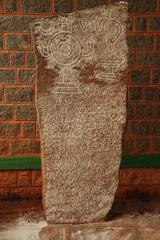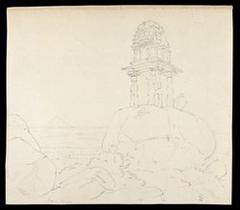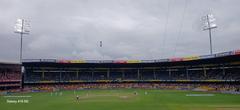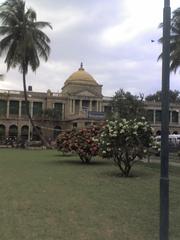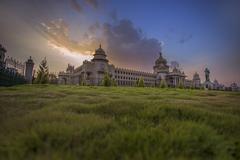Visiting Bengaluru Fort: History, Tickets, Hours, and Tips
Date: 16/08/2024
Introduction
Bengaluru Fort, located in the bustling city of Bangalore, India, stands as a testament to the region’s rich historical tapestry and architectural brilliance. Constructed initially as a mud fort by Kempe Gowda I in 1537, the fort has undergone various transformations, reflecting the evolving political and cultural landscapes of the time. The fort’s strategic importance was highlighted during the reigns of Hyder Ali and Tipu Sultan, particularly during the Anglo-Mysore Wars, where it served as a pivotal military stronghold (New Indian Express). Today, Bengaluru Fort is not just a symbol of the city’s historical resilience but also an architectural marvel, blending Islamic and Hindu styles. Visitors are drawn to its robust granite walls, intricate lattice work, and notable structures like Tipu Sultan’s Summer Palace. This guide aims to provide comprehensive information on Bengaluru Fort, including its history, cultural significance, visiting hours, ticket prices, and nearby attractions. Whether you’re a history enthusiast, architecture aficionado, or a casual traveler, this guide will help you make the most of your visit to this iconic landmark.
Table of Contents
- Introduction
- History of Bengaluru Fort
- Architectural Features
- Role in Anglo-Mysore Wars
- Decline and Preservation
- Notable Structures within the Fort
- Cultural Significance
- Visiting Information
- Accessibility
- Nearby Attractions
- FAQ
- Conclusion
History of Bengaluru Fort
Origins and Early Construction
Bengaluru Fort, also known as Bangalore Fort, was initially constructed as a mud fort by Kempe Gowda I, the founder of Bangalore, in 1537. This fort was strategically established to protect the burgeoning town of Bangalore (New Indian Express).
Expansion and Reinforcement
In 1761, Hyder Ali, the Sultan of Mysore, replaced the mud fort with a stone structure to bolster its defenses (Citybit). His son, Tipu Sultan, further fortified the fort, which played a pivotal role during the Anglo-Mysore Wars (New Indian Express).
Architectural Features
The fort’s design is a blend of Islamic and Hindu architectural styles. Notable features include nine large gates, robust granite walls, and intricate lattice work on the Delhi Gate (Citybit).
Role in Anglo-Mysore Wars
Bengaluru Fort was a key military objective during the Anglo-Mysore Wars. In 1791, British forces led by Lord Cornwallis captured the fort, marking a significant turning point in the conflict (New Indian Express).
Decline and Preservation
Post-capture, the fort lost its military significance and parts were dismantled. However, preservation efforts by the Archaeological Survey of India ensure its conservation (Indian Holiday).
Notable Structures within the Fort
- Tipu Sultan’s Summer Palace: An excellent example of Indo-Islamic architecture, now a museum showcasing artifacts (TripSavvy).
- Ganesha Temple: A testament to the religious tolerance of the era, built by Kempe Gowda I (Indian Holiday).
- Dungeons: Where British prisoners of war were held, with a memorial tablet commemorating Sir David Baird (New Indian Express).
Cultural Significance
Bengaluru Fort is a symbol of Bangalore’s rich cultural heritage, reflecting its historical resilience and architectural evolution (News9Live).
Visiting Information
- Location: New Tharagupet, Bengaluru, Bangalore.
- Visiting Hours: 8:30 AM to 5:30 PM (Citybit).
- Entry Fee: ₹15 for Indian nationals and ₹200 for foreigners (Tripoto).
- Best Time to Visit: November to February for the most comfortable climate (Citybit).
Accessibility
- By Road: Well-connected by the city’s road network; auto-rickshaws and taxis are available.
- By Train: Nearest railway station is Bangalore City Railway Station, about 5.1 km away (Citybit).
- By Air: Kempegowda International Airport, about 38 km from the fort (Citybit).
Nearby Attractions
- Tipu Sultan’s Summer Palace: Within the fort complex (TripSavvy).
- Lalbagh Botanical Garden: Known for its diverse flora (TripSavvy).
- Cubbon Park: A large public park (TripSavvy).
- KR Market: A vibrant flower market with fresh produce (TripSavvy).
FAQ
- What are the visiting hours for Bengaluru Fort? The fort is open from 8:30 AM to 5:30 PM.
- How much are the tickets for Bengaluru Fort? ₹15 for Indian nationals and ₹200 for foreigners.
Conclusion
Bengaluru Fort remains an enduring symbol of Bangalore’s historical and cultural heritage. From its origins as a mud fort built by Kempe Gowda I to its transformation into a stone fortress under Hyder Ali and Tipu Sultan, the fort has witnessed significant historical events, including the Anglo-Mysore Wars. Today, it stands preserved, thanks to the efforts of the Archaeological Survey of India, offering visitors a glimpse into the past. The fort’s architectural features, such as the nine large gates, robust granite walls, and intricate lattice work, continue to captivate visitors. Notable structures within the fort, like Tipu Sultan’s Summer Palace and the Ganesha Temple, further enrich the visitor experience. Practical information, including visiting hours, ticket prices, and accessibility options, ensures that visitors can plan their trip efficiently. Additionally, nearby attractions like Lalbagh Botanical Garden, Cubbon Park, and KR Market offer a well-rounded exploration of Bangalore’s rich cultural landscape. By visiting Bengaluru Fort, you not only delve into the historical and architectural brilliance of the past but also appreciate the cultural resilience that defines Bangalore today. For more travel guides and updates, download our mobile app Audiala and follow us on social media.
References
- New Indian Express, 2011, A Slice of History: The Bangalore Fort (source url)
- Citybit, Bengaluru Fort (source url)
- Indian Holiday, Bangalore Fort (source url)
- TripSavvy, Best Tourist Places to Visit in Bangalore (source url)
- Tripoto, Bangalore Fort (source url)
- News9Live, Bangalore Fort: From Mud Fort to Becoming Base of British Forces (source url)
- Solopassport, Bangalore Fort (source url)
- Holidify, Bangalore Fort Sightseeing (source url)
- Yometro, Travel Guide: Places to Visit in Bangalore (source url)
- Thrillophilia, Around Bangalore (source url)

